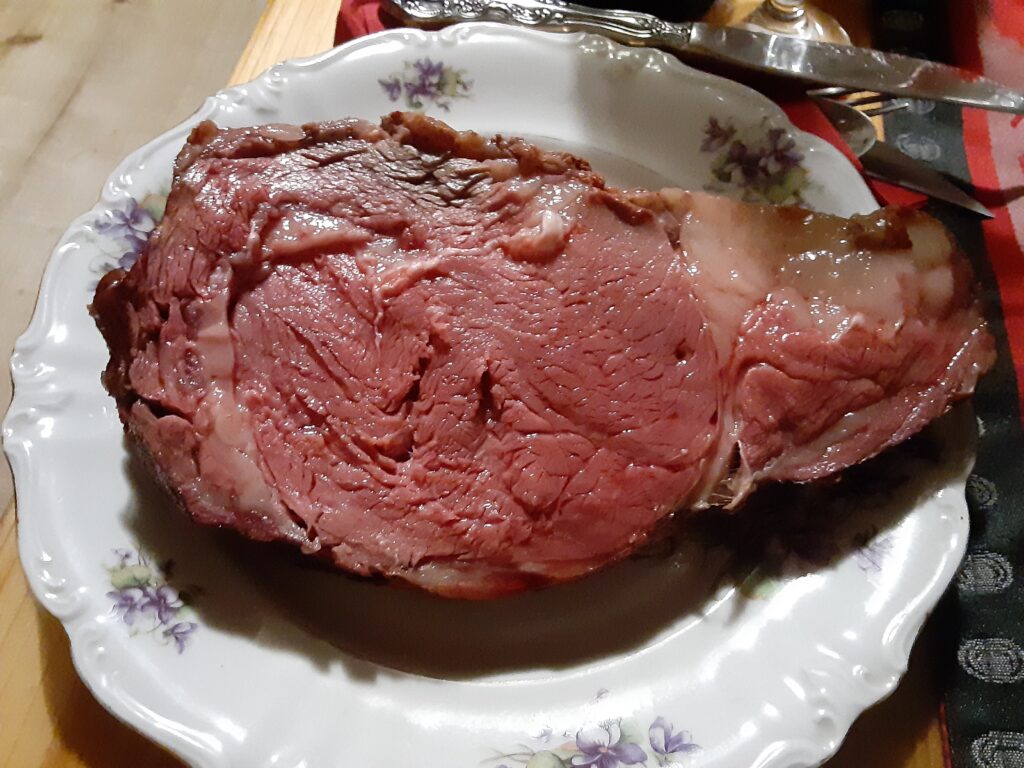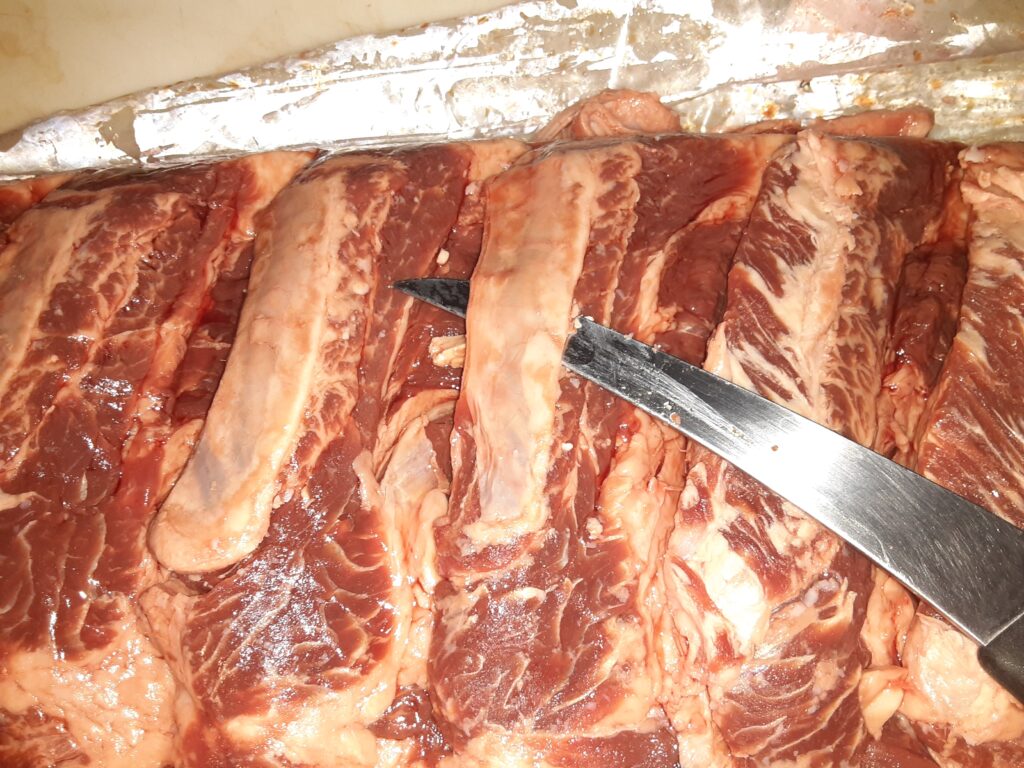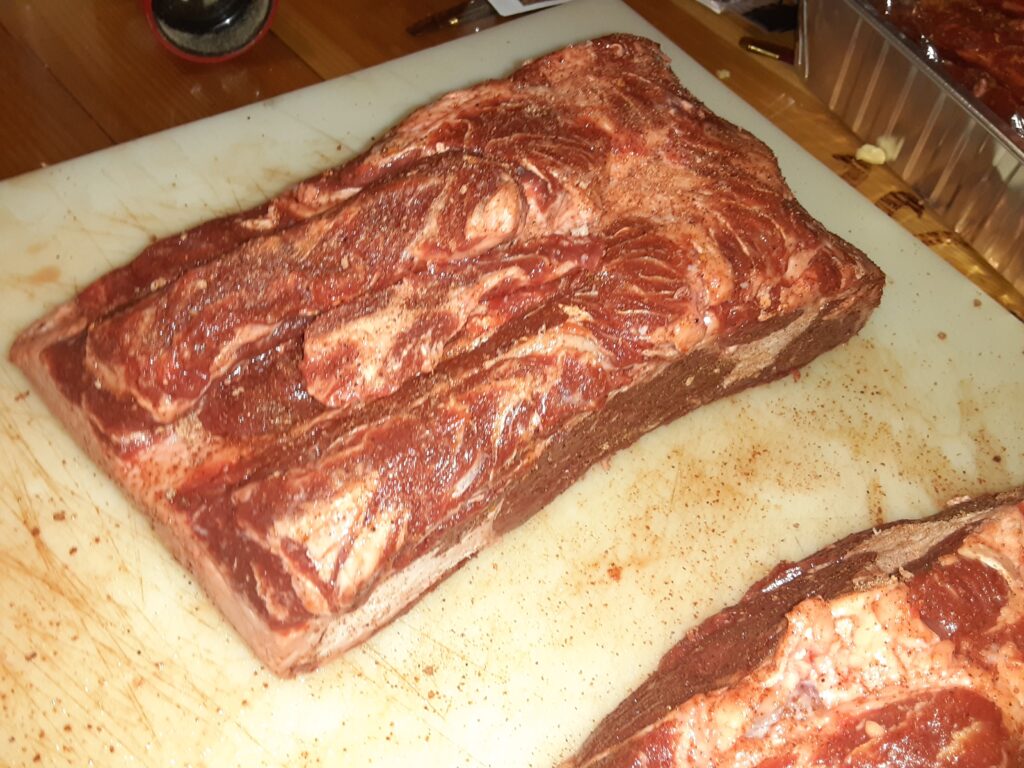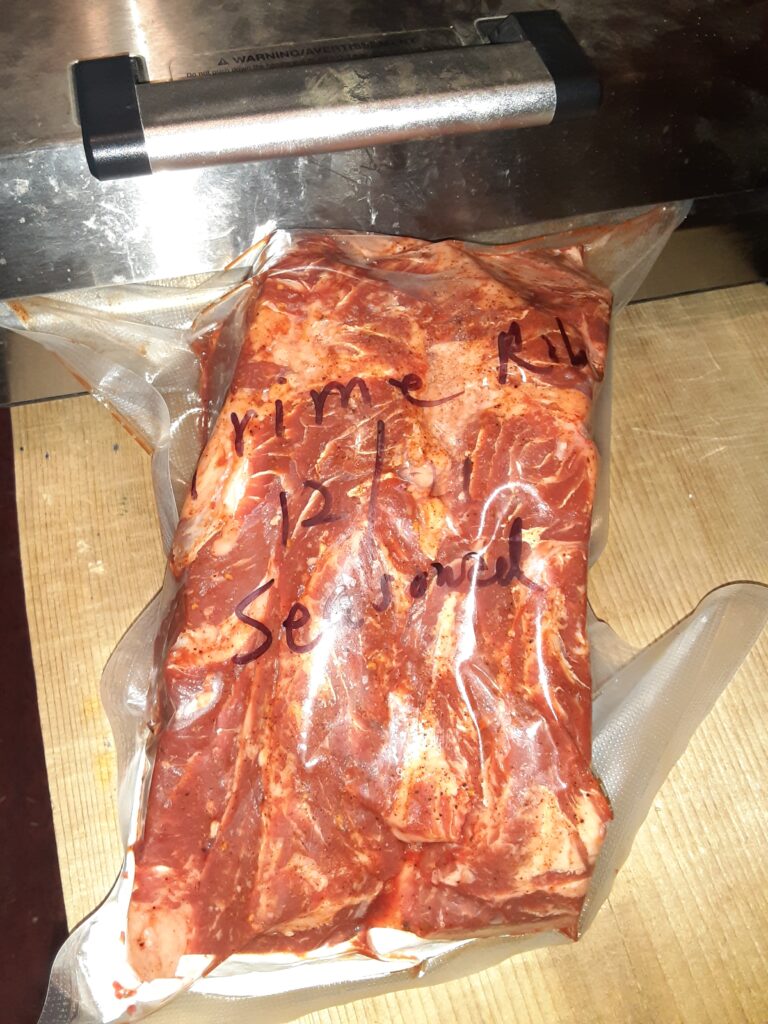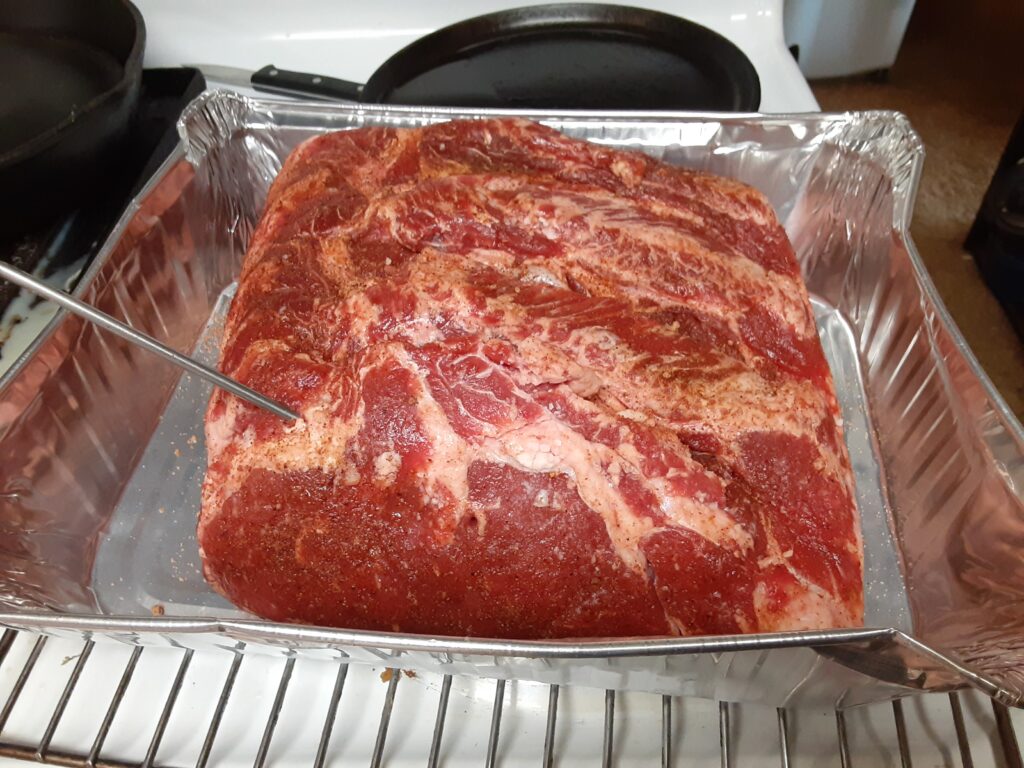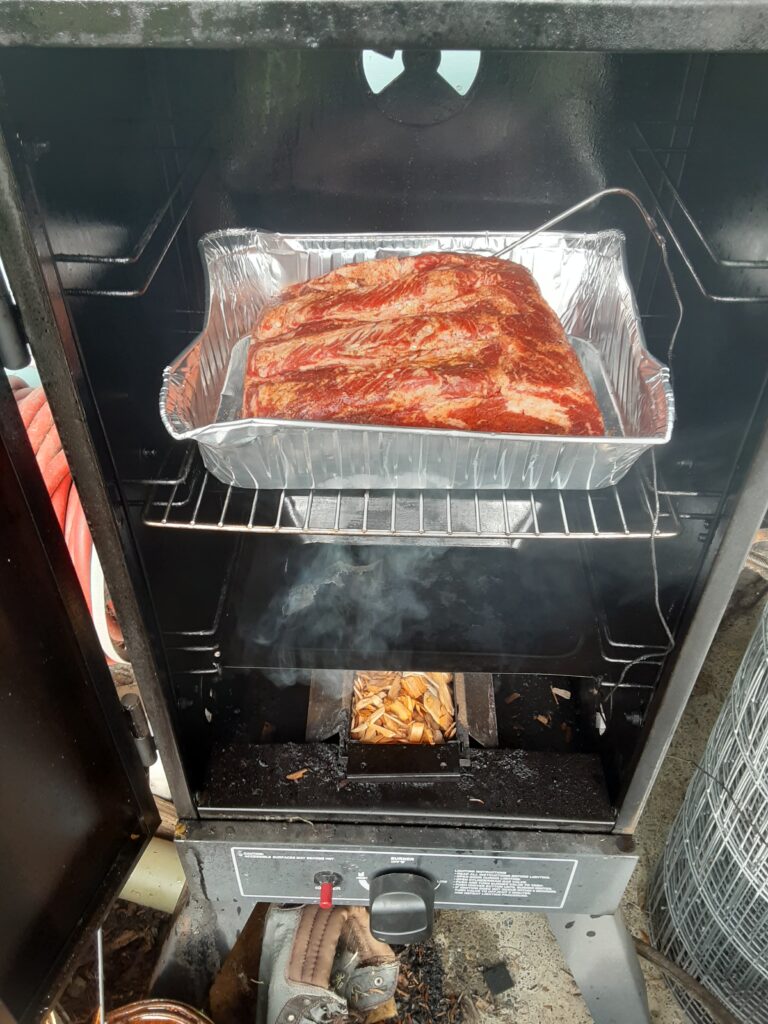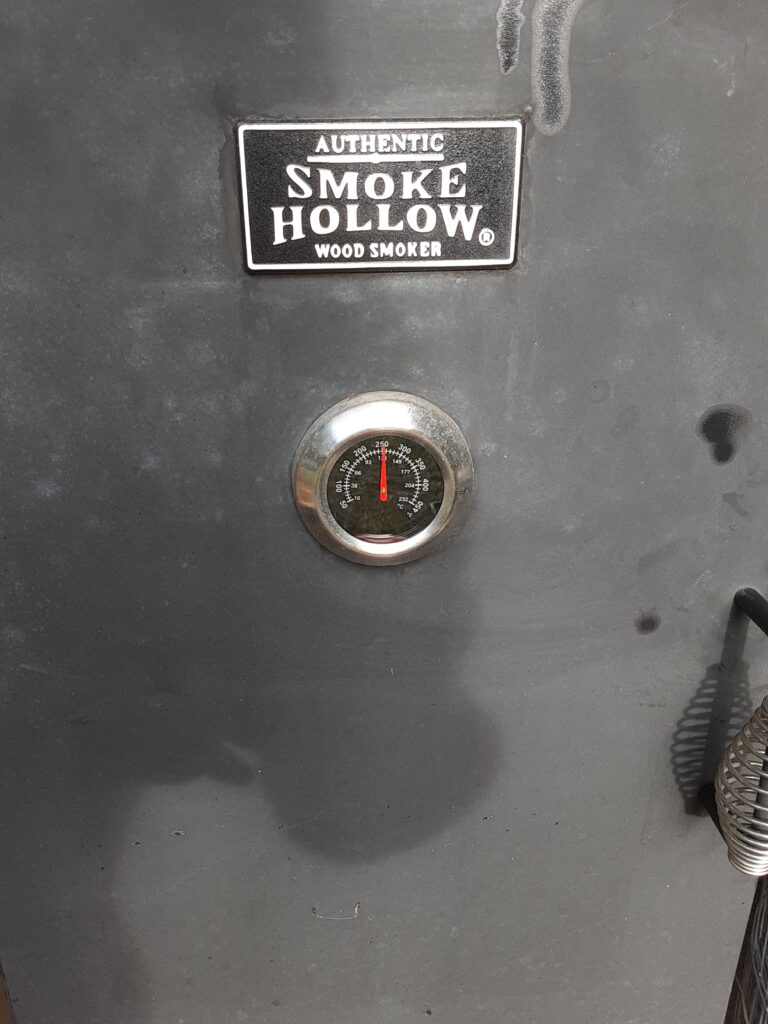Smoking Prime Rib
Prime Rib is an excellent choice for an awesome dinner. It is expensive so we save it for special occasions and traditionally for a Christmas dinner. If you are rich, you probably have it more often than we do, but since it is upwards of $10 per pound on sale we don’t have it very often. The “Prime” grade is the best and very few cuts of beef are good enough to be called “Prime” which is why it is so expensive. Another Pro-Tip is that they are labeled prime “Rib eye” at most places instead of prime rib and can cause some confusion and arguments for the first-time buyer. “Choice” is the grade below it, which is also a good grade of meat although it will not be as tender and flavorful as “Prime”. “Select” is the standard cheapest grade and can be used also, but don’t expect the full flavor and tenderness of the better grades.
Look for good marbling and color in whichever grade you choose. The Prime grade is usually already picked out for you, but make sure it was not mislabeled somewhere during the packing process. Generally, the redder the meat is, the less good flavor it will have and can be a sign that red food coloring may have been used to give it that classic red appearance. I avoid super red beef of any grade unless it’s a super good sale and then I will marinade the steaks or slow cook the roasts with extra seasonings. We try to go to a restaurant supply store and buy the whole “Rib eye” cut, which is usually about 12-20 pounds. We cook up about ten pounds for the dinner usually and we will either slice the rest into steaks or season smaller roasts for later.
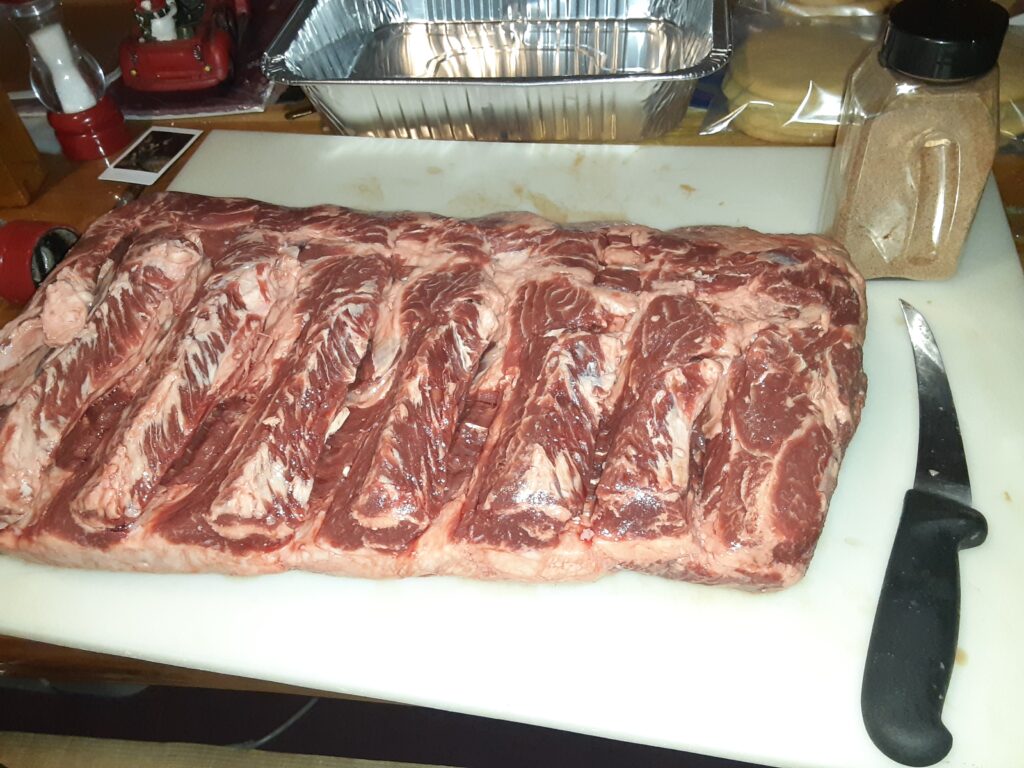
There are many cooking options for prime rib that are excellent options too, but we prefer a little smoky flavor so we smoke ours. Either way you can plan on a four plus hour cook time as you will dry out and burn the outside before the inside cooks if you set the temperature any higher than 250°. Some recipes call for high temperatures at the start to sear the outside and I have found that this does not work well with smoking as it seems to block the smoke flavor from penetrating the meat. I use different seasonings for oven roasted prime ribs than I do for smoked so I can’t help much on oven options. If you ever have a slow smoked prime rib, I guarantee that you will not go back to oven roasted unless you do not have a smoker.
You have to begin the process at least three days before you plan on cooking the prime rib as it is a thick cut of meat and it takes a while for the spices to soak into it thoroughly. Three days is the minimum and I have found that adding an extra day really did not do very much extra for the flavor. My personal preference is the boneless rib eye as it allows flavors to soak in more easily from both sides. Bone-in works too, but don’t expect even flavors if you try it. I begin by slicing the remaining silver skin off of the rib side of the roast if there is any remaining. Some fat can also be trimmed off if you desire to do so, but I just leave it on to help keep the roast juicy and moist as it cooks. I used to trim the fat off and found that it really did not make a difference in the end other than the meat dries out way faster.
Make your dry rub or buy a readymade one if you don’t want to make your own. Rubs are simple to make and you will have at least two cupboard shelves full of various spices very soon after getting into smoking. I use a dry run consisting of mesquite smoked salt, powdered garlic, powdered onions, paprika, and ground thyme leaves and adjust it per pound as needed with the smoked salt being the primary ingredient. I go light on the powdered onions and thyme leaves so experiment with some small batches until you get the flavor you want. The dry rub flavor will be stronger than the finished flavor of the meat so make it just a little stronger than what you want the meat to taste like because you don’t want a bland tasting prime rib after putting all that time, money, and effort into it. Put your dry run onto the meat and make sure every bit of it has a light coating. Do not put it on heavy unless you like it really salty. Wrap it tightly in plastic wrap and let it rest in the refrigerator for three days.
The type of wood that you use to smoke it is also a personal choice, but I use a 2/3 hickory and 1/3 apple wood mix to help give it a good strong smoke flavor that is not overpowering. Be sure to have enough soaked chips on hand to get four hours of smoking time. Place the prime rib in a pan on a rack and put it in the smoker as soon as a heavy smoke starts up. Put your remote thermometer probe in the center of it too if you have one. Heat your smoker to 245° – 250° and maintain that temperature until you reach about 15° below your desired doneness temperature. Rare is 120° – 129°, Medium is 135° – 144°, Medium Well is 145° – 154°, and burnt is 155° – 164°. It is very easy to overcook a prime rib and watching the temperature as it nears is extremely critical. Prime rib will continue cooking and rise another 5° after you remove it so factor that into your final doneness level. You will need to turn the smoker temperature up to 325° when the prime rib internal temperature is 10° below your final temperature (This time includes the extra 5° rise already) to form the trademark “Crust” on the outside of it. For a ten pounder the smoking time is about three hours on low and another hour on high to finish it. After you smoke meats for a while you will see that everything is done by temperatures rather than times. Times are approximate but there are too many variables to be absolute.
Be sure to let it rest for about twenty minutes before slicing and serving it. We make Au Jus sauce and a premium ground horseradish. The ends will have the most flavor and be more fully cooked so serve those to the burnt meat people. If you are like me and like the meat rare enough that a good veterinarian could bring it back to life you definitely want the center cuts. This slow smoking process imparts a great smoked flavor throughout the meat so you will still get that great smoked flavor you are looking for even in the center cuts. Whatever you do, do not get impatient to cook it as you will not get the full flavor in the center so give yourself a forty-five-minute margin of error when planning it. It is better to make people wait than it is to ruin a high-quality tasty piece of prime rib. Your slow smoked prime rib will be the envy of any meat connoisseurs who taste it if you take your time and do it right. We can’t eat prime rib at restaurants for a few months afterwards as ours makes their prime ribs taste like junk and also most seem to use Choice instead of Prime cuts as most are not nearly as tender as ours.
